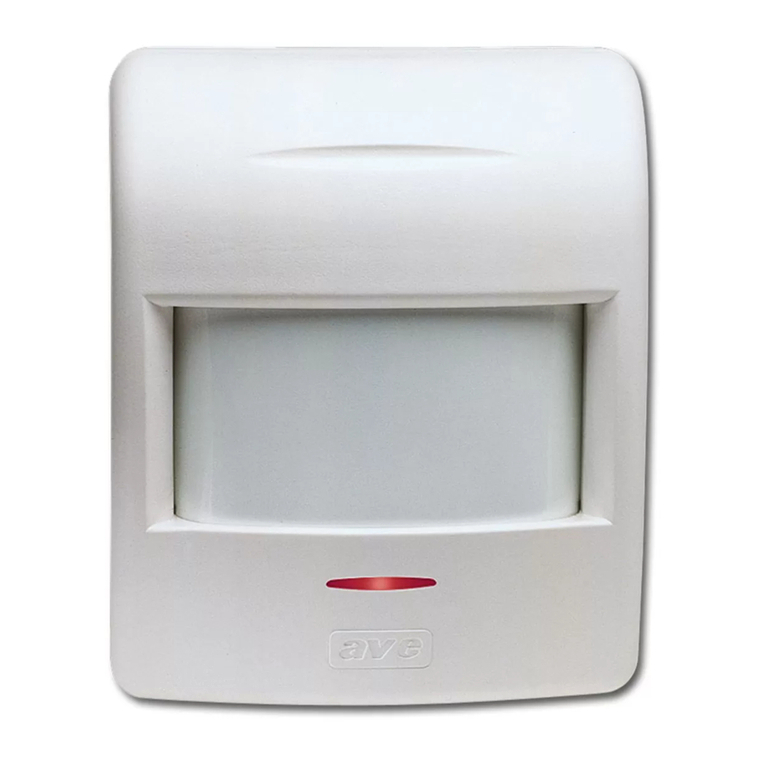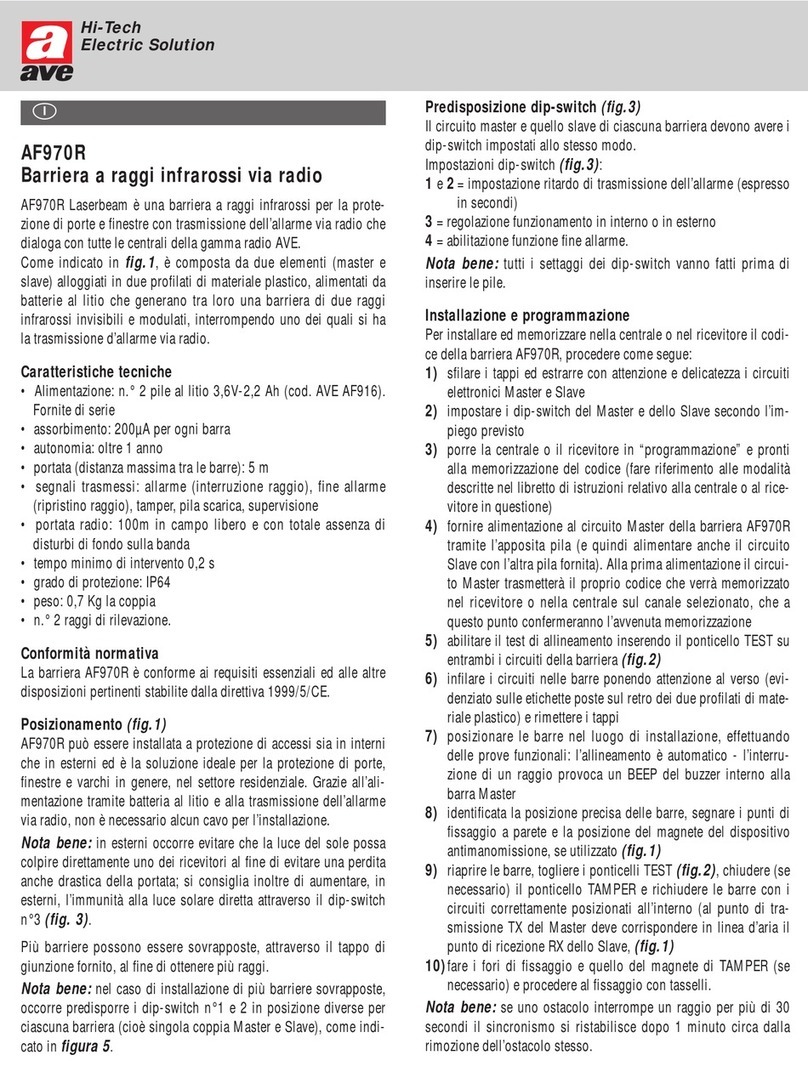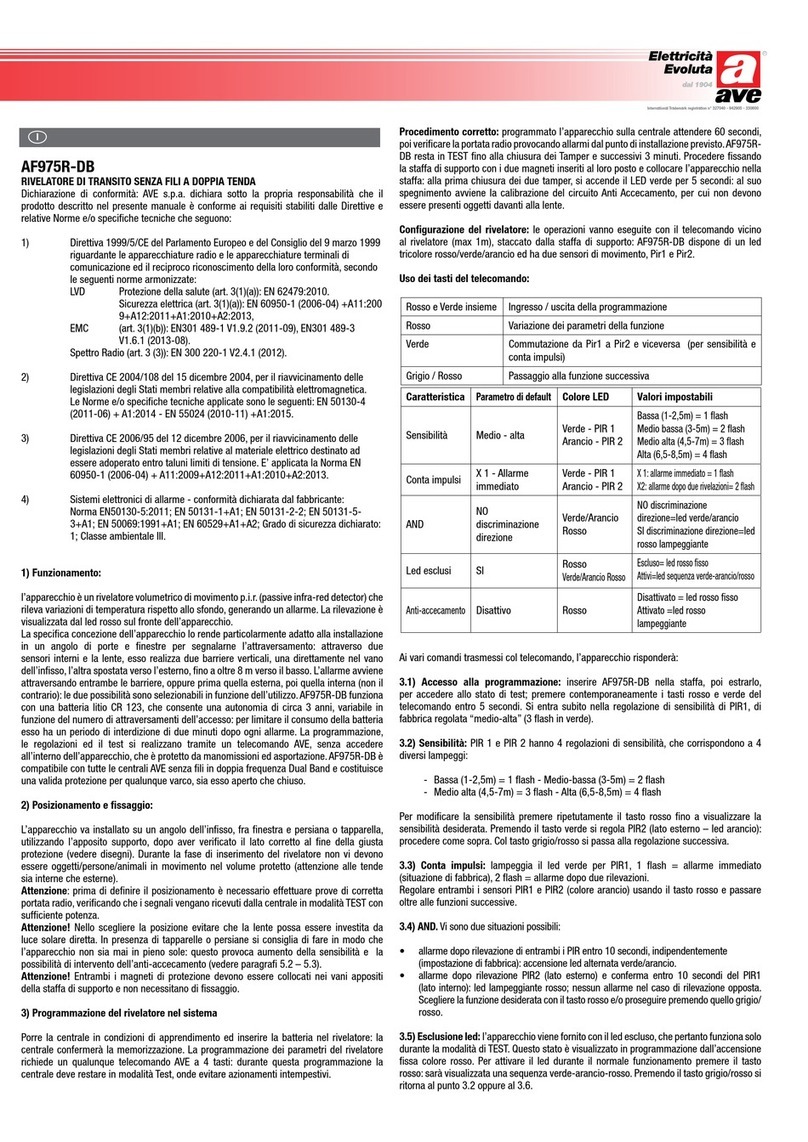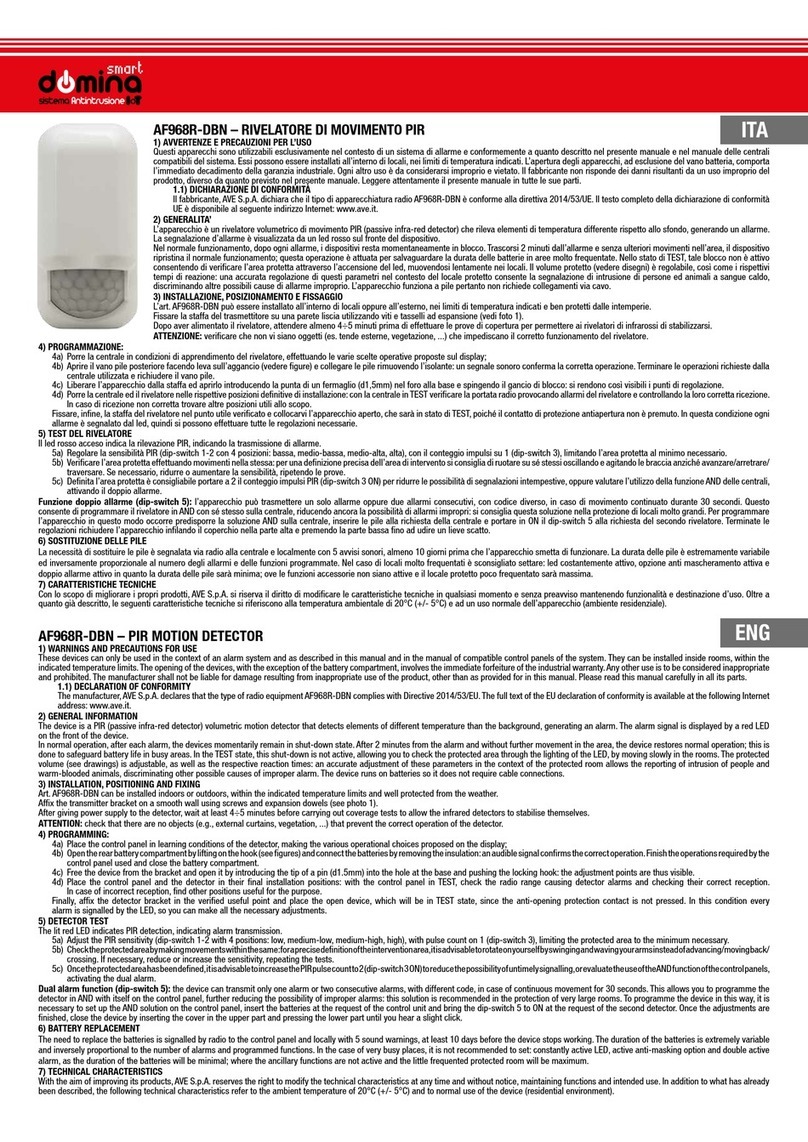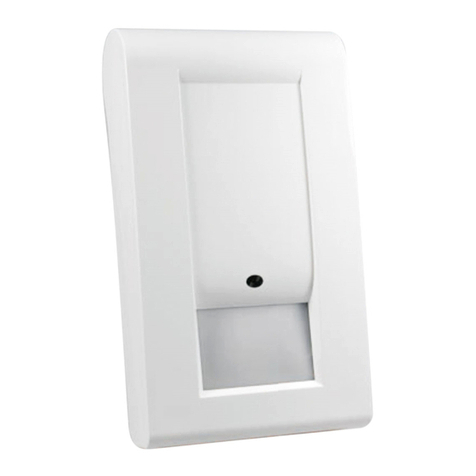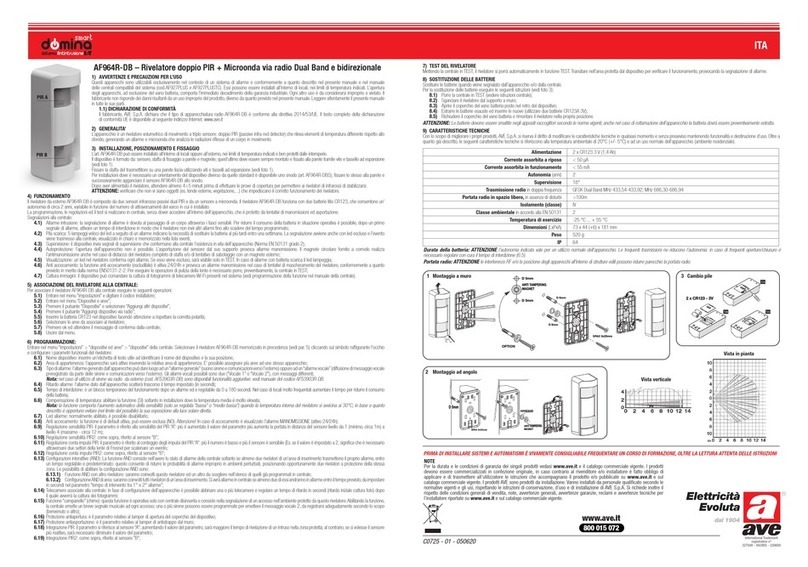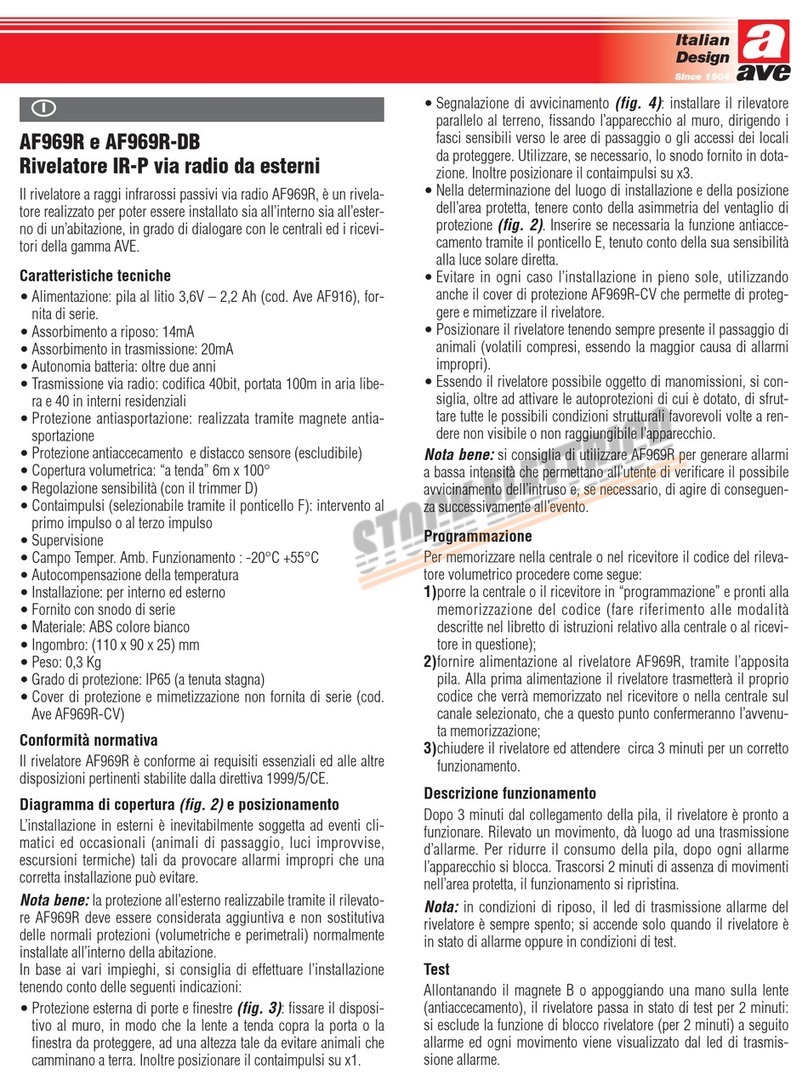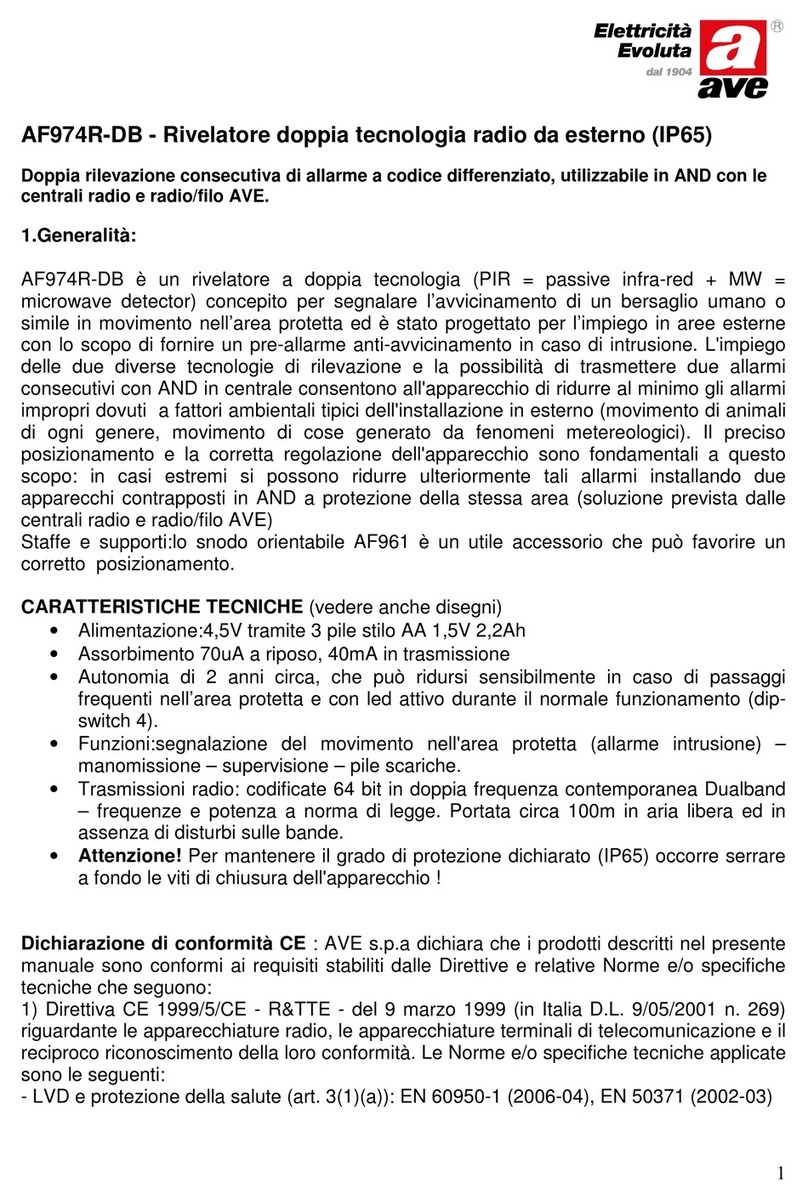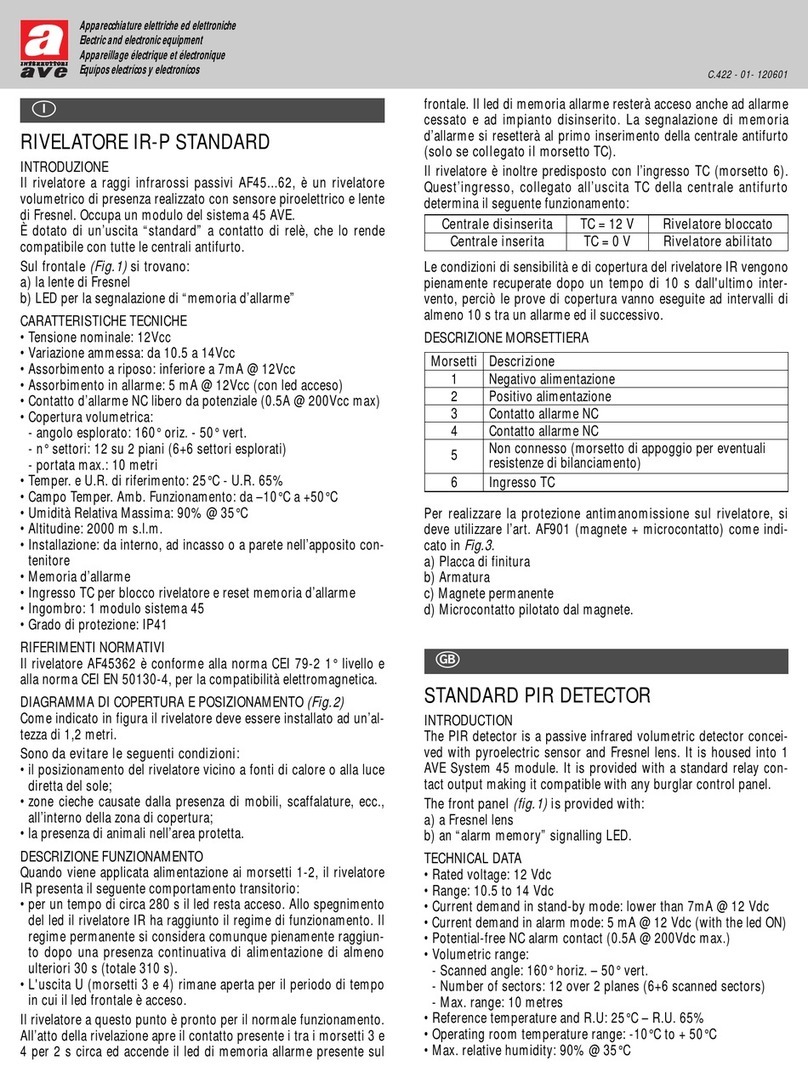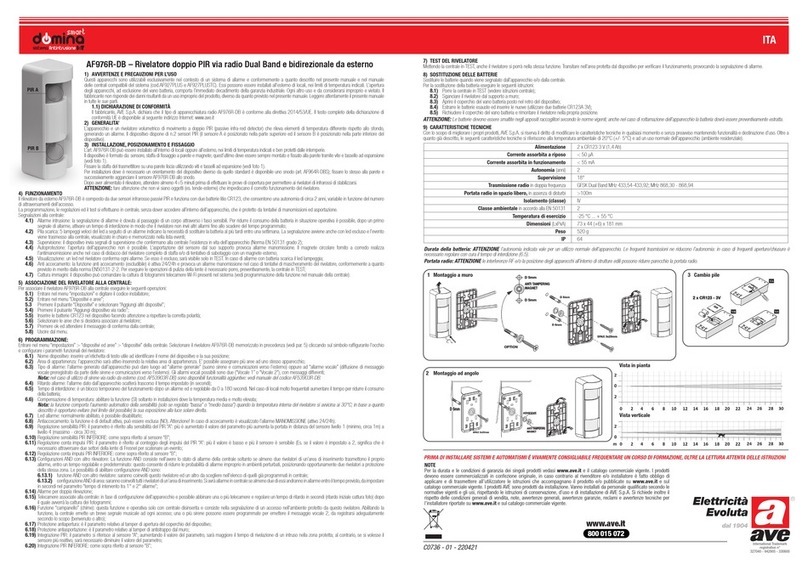AF969R
Rivelatore IR-P via radio da esterni
Il rivelatore a raggi infrarossi passivi via radio AF969R, è un rivela-
tore realizzato per poter essere installato sia all’interno sia all’ester-
no di un’abitazione, in grado di dialogare con le centrali ed i ricevi-
tori della gamma AVE.
Caratteristiche tecniche
•Alimentazione: pila al litio 3,6V – 2,2 Ah (cod. Ave AF916), for-
nita di serie.
•Assorbimento a riposo: 14mA
•Assorbimento in trasmissione: 20mA
•Autonomia batteria: oltre due anni
•Trasmissione via radio: codifica 40bit, portata 100m in aria libe-
ra e 40 in interni residenziali
•Protezione antiasportazione: realizzata tramite magnete antia-
sportazione
•Protezione antiaccecamento e distacco sensore (escludibile)
•Copertura volumetrica: “a tenda” 6m x 100°
•Regolazione sensibilità (con il trimmer D)
•Contaimpulsi (selezionabile tramite il ponticello F): intervento al
primo impulso o al terzo impulso
•Supervisione
•Campo Temper. Amb. Funzionamento : -20°C +55°C
•Autocompensazione della temperatura
•Installazione: per interno ed esterno
•Fornito con snodo di serie
•Materiale: ABS colore bianco
•Ingombro: (110 x 90 x 25) mm
•Peso: 0,3 Kg
•Grado di protezione: IP65 (a tenuta stagna)
•Cover di protezione e mimetizzazione non fornita di serie (cod.
Ave AF969R-CV)
Conformità normativa
Il rivelatore AF969R è conforme ai requisiti essenziali ed alle altre
disposizioni pertinenti stabilite dalla direttiva 1999/5/CE.
Diagramma di copertura (fig. 2) e posizionamento
L’installazione in esterni è inevitabilmente soggetta ad eventi cli-
matici ed occasionali (animali di passaggio, luci improvvise,
escursioni termiche) tali da provocare allarmi impropri che una
corretta installazione può evitare.
Nota bene: la protezione all’esterno realizzabile tramite il rilevato-
re AF969R deve essere considerata aggiuntiva e non sostitutiva
delle normali protezioni (volumetriche e perimetrali) normalmente
installate all’interno della abitazione.
In base ai vari impieghi, si consiglia di effettuare l’installazione
tenendo conto delle seguenti indicazioni:
•Protezione esterna di porte e finestre (fig. 3): fissare il disposi-
tivo al muro, in modo che la lente a tenda copra la porta o la
finestra da proteggere, ad una altezza tale da evitare animali che
camminano a terra. Inoltre posizionare il contaimpulsi su x1.
•Segnalazione di avvicinamento (fig. 4): installare il rilevatore
parallelo al terreno, fissando l’apparecchio al muro, dirigendo i
fasci sensibili verso le aree di passaggio o gli accessi dei locali
da proteggere. Utilizzare, se necessario, lo snodo fornito in dota-
zione. Inoltre posizionare il contaimpulsi su x3.
•Nella determinazione del luogo di installazione e della posizione
dell’area protetta, tenere conto della asimmetria del ventaglio di
protezione (fig. 2). Inserire se necessaria la funzione antiacce-
camento tramite il ponticello E, tenuto conto della sua sensibilità
alla luce solare diretta.
•Evitare in ogni caso l’installazione in pieno sole, utilizzando
anche il cover di protezione AF969R-CV che permette di proteg-
gere e mimetizzare il rivelatore.
•Posizionare il rivelatore tenendo sempre presente il passaggio di
animali (volatili compresi, essendo la maggior causa di allarmi
impropri).
•Essendo il rivelatore possibile oggetto di manomissioni, si con-
siglia, oltre ad attivare le autoprotezioni di cui è dotato, di sfrut-
tare tutte le possibili condizioni strutturali favorevoli volte a ren-
dere non visibile o non raggiungibile l’apparecchio.
Nota bene: si consiglia di utilizzare AF969R per generare allarmi
a bassa intensità che permettano all’utente di verificare il possibile
avvicinamento dell’intruso e, se necessario, di agire di conseguen-
za successivamente all’evento.
Programmazione
Per memorizzare nella centrale o nel ricevitore il codice del rileva-
tore volumetrico procedere come segue:
1)porre la centrale o il ricevitore in “programmazione” e pronti alla
memorizzazione del codice (fare riferimento alle modalità
descritte nel libretto di istruzioni relativo alla centrale o al ricevi-
tore in questione);
2)fornire alimentazione al rivelatore AF969R, tramite l’apposita
pila. Alla prima alimentazione il rivelatore trasmetterà il proprio
codice che verrà memorizzato nel ricevitore o nella centrale sul
canale selezionato, che a questo punto confermeranno l’avvenu-
ta memorizzazione;
3)chiudere il rivelatore ed attendere circa 3 minuti per un corretto
funzionamento.
Descrizione funzionamento
Dopo 3 minuti dal collegamento della pila, il rivelatore è pronto a
funzionare. Rilevato un movimento, dà luogo ad una trasmissione
Hi-Tech
Electric Solution
